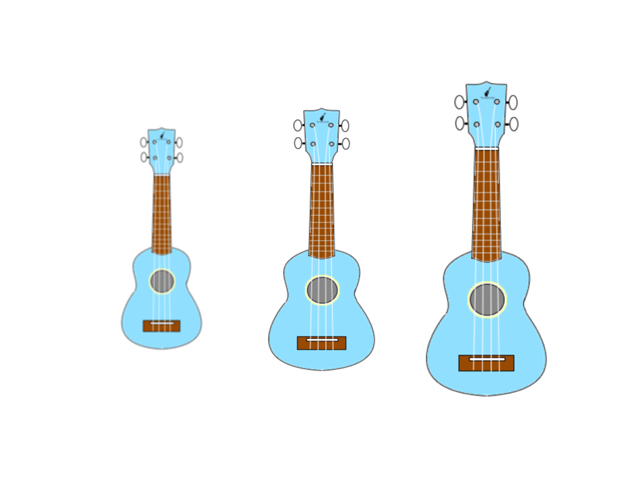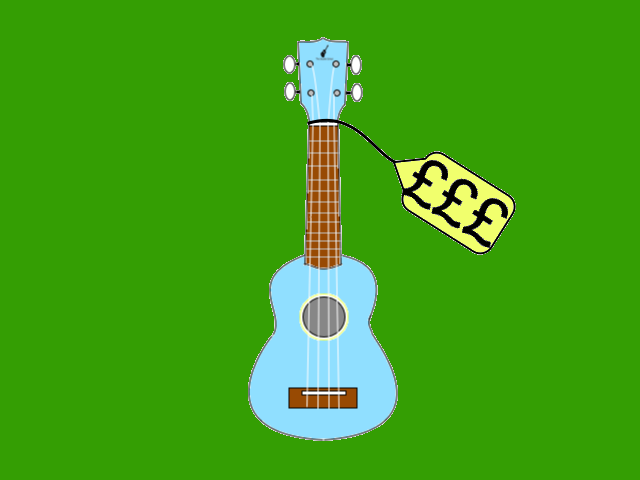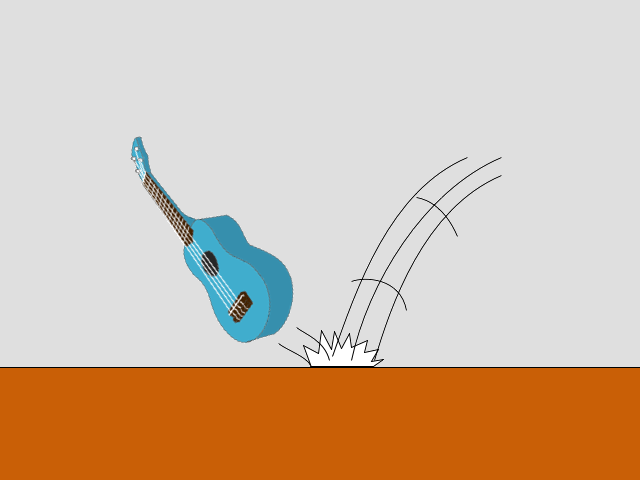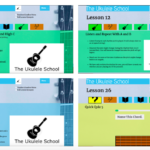If you want any sort of ukulele scheme to take place in your school, you are going to need some instruments to play. There are a vast array of makes, models and types of ukulele to choose from, so where do you start? We’re here to give you a quick guide with some of the things to look out for, and some things not to worry about.
Soprano, Concert of Tenor?
This is probably the easiest decision to make. There are handful of different sizes/types of ukulele, the main three being soprano, concert and tenor (the baritone, and sopranino are a bit more obscure and we certainly would never recommend them).
In schools you would normally find sopranos as these are cheaper, are a good size for children’s hands, easier to store and the most common type of Ukulele anyway.
Concert ukuleles are only slightly larger and have the benefit of a few more frets at the higher end. These probably won’t be of much use to your class but for the teacher could offer a slightly louder sound and larger more comfortable frets. (Not to mention as your teachers become hooked on playing the ukulele they may even appreciate those extra frets.)

Which Brand?
We’re going to steer a little clear of recommending one particular brand, though there are certain brands that have seen a great deal of success in schools. As with anything, you get what you pay for, and what may seem like a great deal may leave you with unusable toys rather than a quality set of instruments.
There are certain things offered by some companies that aren’t by others, here are a few of the things we would look for.
- String quality – The strings are what are going to be making your sound. Poor quality strings will sound worse as well as leaving you spending hours of your life trying to keep them in tune. Some companies such as Octopus offer ukuleles with Aquila Nylgut strings which are incredibly popular even amongst professional players.
- Build quality – Are there any sharp edges particularly at the frets? Your students are going to struggle if they’re constantly scratching their hands. Watch out for the tuning mechanism: is it screwed on firmly and do the pegs feel particularly hard to turn?
- What are other schools using?- You probably wouldn’t buy yourself an instrument without trying it first so see if you can have a go on a few different brands to see which you prefer.
As well as offering useful things, some companies also throw in a whole lot of things you won’t need. Many beginner ukuleles come with books, CDs and chord charts. These are usually not worth it: you’re likely to be using your own (or our) resources so don’t let any of this “case candy” sway your choice.

Machine or friction tuning?
Traditional ukuleles use friction tuners (the ones that stick straight out of the back of the head). Whilst these might suit the purist player, in a classroom setting you’re just going be looking at a whole load of broken and out of tune strings. Machine heads (the geared ones) hold their tuning much better and are far more robust around children.
Plastic Fantastic…
Some companies sell plastic ukuleles. Whilst many plastic ukuleles fall very firmly into the toy category, there are a few of the higher end brands such as Kala/Makala who do sell plastic instruments. The main selling point behind these is their durability and oddly their waterproofing (in case your timetable is squeezed and you need to combine swimming and music?). We personally don’t think the trade off for sound quality is worth it. Many of the plastic instruments have a slightly annoying buzzing tone to the sound. Even if you avoid the buzz, the sound quality is usually poorer than on a wooden instrument.

High end?
Ukuleles are normally considered a cheap instrument. That doesn’t mean that all of them are. The top end brands such as Kamaka and Kanile’a can sell for thousands of pounds. My trusty Ohana is a good quality mid range instrument that has served me well for years. Whilst you would never consider giving the pupils an instrument like that, it is well worth considering using a better quality instrument yourself or at least showing the pupils videos of professional players so that they can see just how good ukuleles can sound. Check out our list of great performance videos to see some very expensive ukes in action.
More from The Ukulele School

